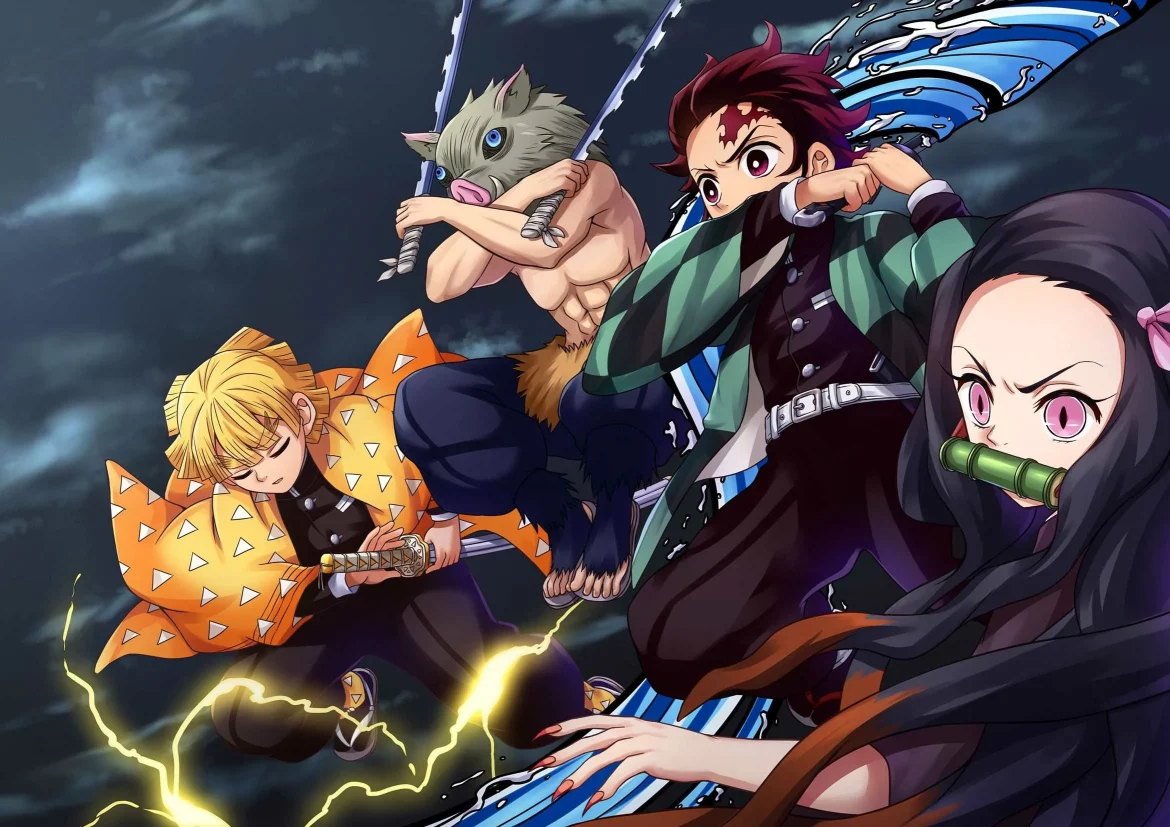In the world of Demon Slayer: Kimetsu no Yaiba, demons are formidable, terrifying beings who play a central role in the story. These creatures are known for their extraordinary strength, supernatural abilities, and insatiable hunger for human flesh. However, the demons are not just mindless monsters; they are complex characters with their own tragic backstories, desires, and motivations. This article delves into the origins, characteristics, and roles of demons in the Demon Slayer universe, exploring how they shape the narrative and challenge the protagonists on their journey.
The Origins of Demons
Demons in Demon Slayer have a dark and mysterious origin. At the heart of this origin is Muzan Kibutsuji, the first demon, whose creation dates back over a thousand years. Muzan was originally a human suffering from a terminal illness. In a desperate attempt to survive, he was subjected to an experimental treatment by a doctor who sought to cure him. However, the treatment had unforeseen consequences: while Muzan was cured of his illness, he was transformed into a demon, gaining immortality at the cost of his humanity.
Muzan’s transformation marked the beginning of a new era of terror. As the progenitor of all demons, Muzan possesses the unique ability to turn humans into demons by sharing his blood with them. This process is not without risks; the human receiving Muzan’s blood must have a strong constitution to survive the transformation. Those who do survive are granted immense strength, regenerative abilities, and various supernatural powers, but they are also cursed with an insatiable hunger for human flesh and a vulnerability to sunlight, which can burn them to ashes instantly.
see also: Can Demons in Demon Slayer Reproduce?
Characteristics of Demons
Physical Characteristics
Demons retain some of their human appearance after their transformation, but there are often significant changes. They gain unnatural physical abilities, including superhuman strength, speed, and agility. Their bodies become incredibly durable, capable of withstanding extreme damage that would be fatal to humans. Additionally, demons have the ability to regenerate from almost any injury, making them nearly invincible in battle.
One of the most distinctive physical traits of demons is their vulnerability to sunlight. Exposure to sunlight causes a demon’s body to disintegrate and burn to ashes within moments, making it their greatest weakness. As a result, demons are nocturnal creatures, emerging from their hiding places only after the sun has set.
Psychological Characteristics
Despite their monstrous nature, demons retain some aspects of their former human selves. This often manifests in the form of memories, emotions, and desires that linger even after their transformation. However, these remnants of humanity are typically overshadowed by the overwhelming hunger for human flesh, which drives most demons to commit horrific acts.
The psychological torment of demons is a recurring theme in Demon Slayer. Many demons struggle with the loss of their humanity, grappling with the guilt and regret of their actions. Some demons try to suppress these feelings by fully embracing their new identity as monsters, while others hold onto the hope that they can regain their humanity.
The Twelve Kizuki
Among the demons, the Twelve Kizuki, also known as the Twelve Demon Moons, are the most powerful and feared. These demons serve directly under Muzan Kibutsuji and are divided into two groups: the Upper Rank and the Lower Rank. The Twelve Kizuki are responsible for carrying out Muzan’s will, and their strength far surpasses that of ordinary demons.
Upper Rank Demons
Kokushibo: The Upper Rank One, Kokushibo is one of the oldest and most powerful demons in existence. He was once a human named Michikatsu Tsugikuni, who became a demon to achieve immortality. Kokushibo is a master swordsman and uses his Blood Demon Art to create powerful, crescent-shaped blades that can slice through anything. His tragic backstory and rivalry with his brother, Yoriichi, add depth to his character.
Doma: The Upper Rank Two, Doma is a charismatic and sadistic demon who thrives on manipulating others. He was the leader of a cult before becoming a demon, and his Blood Demon Art allows him to create deadly ice and frost attacks. Doma’s twisted sense of morality and his lack of empathy make him a chilling antagonist.
Akaza: The Upper Rank Three, Akaza is a fearsome martial artist who relishes in combat. His Blood Demon Art enhances his physical abilities, making him nearly unstoppable in close-quarters combat. Akaza’s past as a human, where he was once a devoted husband and father, contrasts sharply with his violent nature as a demon.
Hantengu: The Upper Rank Four, Hantengu possesses a unique Blood Demon Art that allows him to split into multiple clones, each representing a different emotion. This ability makes him a formidable opponent, as he can overwhelm his enemies with sheer numbers and unpredictability. Hantengu’s cowardice and paranoia are defining traits of his character.
Gyokko: The Upper Rank Five, Gyokko is an artistically inclined demon who takes great pride in his grotesque creations. His Blood Demon Art allows him to manipulate and control vases, using them as weapons and traps. Gyokko’s obsession with beauty and his disdain for anything he deems “ugly” make him a particularly unsettling foe.
Daki and Gyutaro: The Upper Rank Six is shared by the siblings Daki and Gyutaro. These two demons work together in perfect harmony, using their combined powers to dominate their enemies. Daki’s Blood Demon Art allows her to manipulate her sashes, which she uses.
Conclusion
The demons in Demon Slayer: Kimetsu no Yaiba are complex, tragic, and terrifying beings. Created by Muzan Kibutsuji’s insatiable thirst for power, they represent the darkest aspects of humanity. Despite their monstrous nature, many demons retain fragments of their humanity, making them compelling and multifaceted characters.


